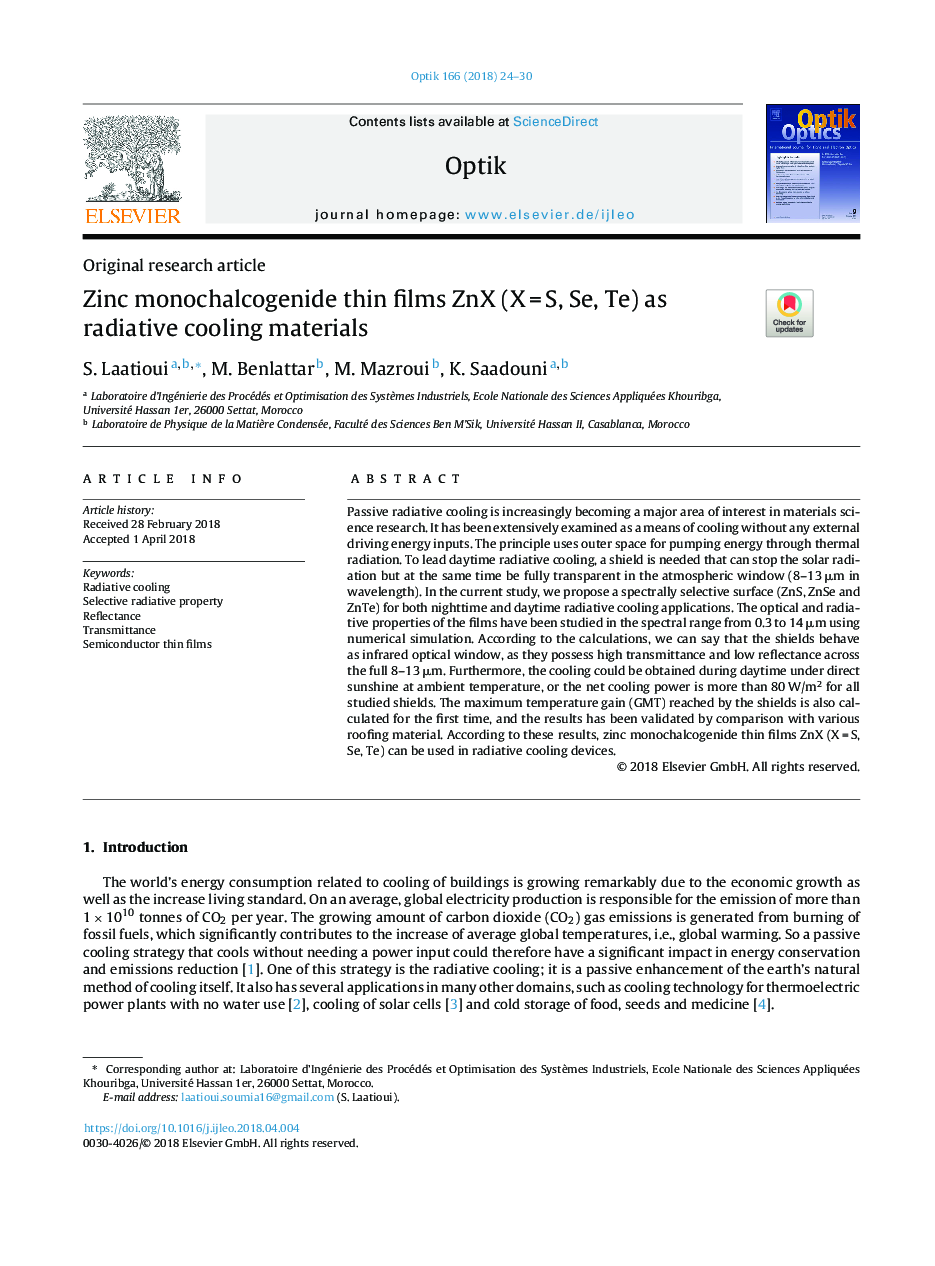| Article ID | Journal | Published Year | Pages | File Type |
|---|---|---|---|---|
| 7223608 | Optik - International Journal for Light and Electron Optics | 2018 | 7 Pages |
Abstract
Passive radiative cooling is increasingly becoming a major area of interest in materials science research. It has been extensively examined as a means of cooling without any external driving energy inputs. The principle uses outer space for pumping energy through thermal radiation. To lead daytime radiative cooling, a shield is needed that can stop the solar radiation but at the same time be fully transparent in the atmospheric window (8-13â¯Î¼m in wavelength). In the current study, we propose a spectrally selective surface (ZnS, ZnSe and ZnTe) for both nighttime and daytime radiative cooling applications. The optical and radiative properties of the films have been studied in the spectral range from 0.3 to 14â¯Î¼m using numerical simulation. According to the calculations, we can say that the shields behave as infrared optical window, as they possess high transmittance and low reflectance across the full 8-13â¯Î¼m. Furthermore, the cooling could be obtained during daytime under direct sunshine at ambient temperature, or the net cooling power is more than 80â¯W/m² for all studied shields. The maximum temperature gain (GMT) reached by the shields is also calculated for the first time, and the results has been validated by comparison with various roofing material. According to these results, zinc monochalcogenide thin films ZnX (Xâ¯=â¯S, Se, Te) can be used in radiative cooling devices.
Related Topics
Physical Sciences and Engineering
Engineering
Engineering (General)
Authors
S. Laatioui, M. Benlattar, M. Mazroui, K. Saadouni,
